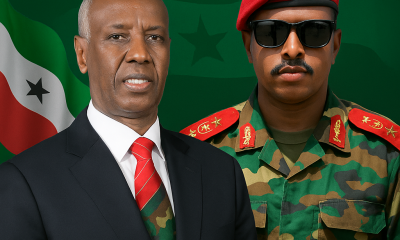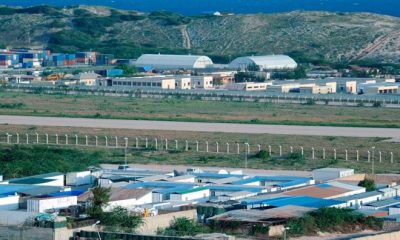Analysis
Somali-American Vlogger’s Taliban Selfies Spark Fury: Is She Glamourizing Oppression?

Marian Abdi’s Controversial Photos with Taliban Fighters Ignite Outrage—Is She an Innocent Traveler or a Reckless Provocateur?
In a world where influencers shape perceptions as much as politicians, Somali-American travel vlogger Marian Abdi, known online as ‘Geenyada Madow,’ has stirred up a storm with her latest escapade. Her seemingly innocuous trip to Afghanistan has morphed into a scandal, drawing sharp rebukes from critics who accuse her of glamorizing one of the most repressive regimes of our time.
Abdi, who has built a following through her vibrant travel content, described her visit to Afghanistan as a “dream come true.” But the dream quickly turned into a nightmare for many when she posted photos of herself grinning alongside armed Taliban fighters. The images, which show her posing with men holding AK-47s, have ignited a firestorm of outrage.
Social media erupted in condemnation. Critics argued that Abdi’s smiling snapshots trivialize the brutal reality faced by millions of Afghans under Taliban rule. “Do not promote a terrorist group that has banned education and all fundamental rights of women,” blasted one outraged user on Twitter. Another added, “The same men you stand by smiling restrict their women from doing exactly what you’re doing—travelling, blogging, being educated, working!”
Defending her controversial choice, Abdi claimed that her intention was purely to explore and document her experiences in Afghanistan, not to endorse the Taliban. “I’m genuinely curious—what do you want me to do? Should I avoid visiting Afghanistan altogether?” she asked, challenging her critics. “How do you expect a tourist to navigate politics with the Taliban? Even if I didn’t take a photo with them, would that change anything?”
Abdi’s defense included a perplexing question: why is she being singled out when other travel vloggers have ventured into Afghanistan without similar backlash? “Yes, a lot is happening, but is that my fault?” she wondered aloud. “Other YouTubers have created content there, so why am I treated differently? And why bring race into this?”
Her critics, including Niloofar Naeimi, a prominent advocate for Afghan women’s rights, were unmoved by Abdi’s explanations. Naeimi condemned Abdi’s actions as “deeply troubling and unacceptable,” arguing that the vlogger’s posts ignore the grave oppression faced by Afghan women under Taliban control.
In response to mounting criticism, Abdi took to YouTube, insisting that her aim was to document rather than endorse. “I received nothing but respect. I don’t agree with everything they do, but I didn’t see any issue being there,” she said. She also recounted her inquiries to the Taliban about their policies on girls’ education, noting that their responses were evasive, with one fighter claiming, “everything takes time.”
Despite the uproar, Abdi’s supporters, predominantly Somali netizens, have rallied to her defense. “Keep going, sis! I love your travel vlog!” cheered one follower. Another praised her unique perspectives, urging her to continue despite the backlash.
As Abdi continues her journey through Afghanistan, recently arriving in Kandahar, the controversy shows no sign of dying down. Is she an adventurous traveler documenting a complex reality, or has she crossed an ethical line by mingling with a regime notorious for its human rights abuses?

The debate rages on, leaving a trail of questions about the responsibilities of influencers in conflict zones and the consequences of their actions.
Analysis
Operation Rough Rider Escalates as UK Joins Trump’s Military Campaign Against Houthis
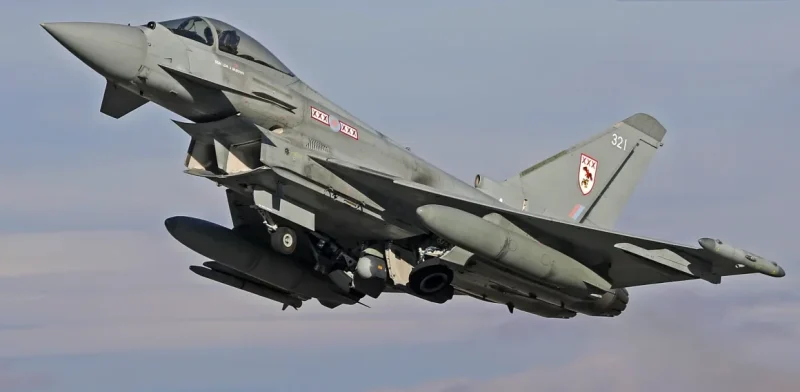
The United Kingdom’s latest joint airstrike with the United States marks a new phase in the ongoing campaign against Yemen’s Houthi rebels—one that reveals both the deepening of transatlantic military coordination and the mounting complexity of Red Sea security.
On Tuesday night, British Typhoon fighter jets, in coordination with US forces, targeted a cluster of drone manufacturing sites south of Sanaa. The strikes were carried out with precision-guided bombs following extensive intelligence and planning. The Ministry of Defence in London emphasized that the mission was designed to minimize collateral damage, while sending a clear message of deterrence.
This strike—Britain’s first public acknowledgment of a joint operation since President Donald Trump launched Operation Rough Rider—signals a shift. It is no longer just about disruption of Houthi logistics, but about visible, sustained punishment of a group that has effectively paralyzed one of the world’s busiest maritime corridors. The Houthis’ attacks have caused a staggering 55% drop in shipping through the Red Sea, according to UK Defense Secretary John Healey, with economic repercussions felt far beyond the Gulf.
Since Trump initiated the campaign in March, over 800 US strikes have hammered Houthi infrastructure, including refineries, airports, missile depots, and now drone labs. Yet the results remain mixed. While dozens of senior Houthi officers are reported killed, the group’s ability to intercept American drones and continue attacks on commercial vessels shows it remains operationally resilient.
The UK’s renewed participation adds credibility to the broader Western coalition’s resolve—but it also increases the risks of mission creep, civilian casualties, and regional blowback. Already, allegations are surfacing. Just this week, the Houthis claimed that a US strike killed at least 68 African migrants held in a detention facility—an allegation now under investigation by CENTCOM.
What emerges is a complicated battlefield: Trump is pursuing a hard-power strategy to restore deterrence and freedom of navigation, but his campaign is being tested by asymmetric warfare, Iranian proxy dynamics, and humanitarian optics.
As the Red Sea becomes increasingly militarized, the question looms: Will these strikes produce strategic deterrence, or draw the West deeper into a conflict that cannot be won from the air alone?
Analysis
Somalia’s Airspace Ban Reveals China’s Grip—and Somaliland’s Rising Global Standing
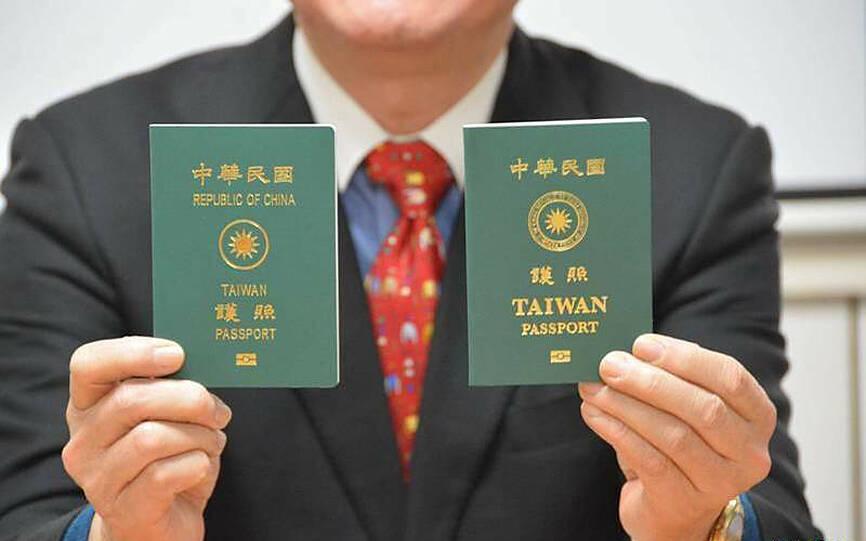
The Somali government’s latest directive banning entry to Taiwanese passport holders is more than a travel restriction—it’s a geopolitical message dictated from Beijing. In the guise of “UN compliance,” Mogadishu has escalated its hostility toward Somaliland and deepened its role as a regional surrogate for Chinese interests in the Horn of Africa.
Somaliland, unlike Somalia, has been a functioning democracy for over three decades. Its strategic and values-based partnership with Taiwan—cemented in 2020 with mutual representative offices—represents a rare model of cooperation between two self-governing, democratic entities facing isolation due to external political pressures. That model is precisely what threatens both Beijing and Mogadishu.
The so-called compliance with UN Resolution 2758 is a legal stretch. The resolution merely transferred the China seat at the UN to the People’s Republic of China—it says nothing about Taiwan’s sovereignty. This deliberate misreading, pushed aggressively by Beijing and now echoed by Somalia, is being used to block Taiwan’s global engagement—especially with democratic partners like Somaliland.
The real message here is that Somalia is attempting to weaponize airspace control over a territory it no longer governs. Since 1991, Somaliland has reasserted its independence, conducted peaceful elections, built credible institutions, and attracted legitimate diplomatic interest from global partners like Taiwan, the UK, and the United States. That recognition is growing—and Somalia, under pressure from China, is reacting with desperate measures.
For Somaliland and its president, Abdirahman Mohamed Abdullahi Irro, this presents a strategic opportunity. The world is now watching Somalia’s China-backed aggression unfold in real time. This incident should trigger sharper diplomatic coordination between Somaliland and its allies. It underscores the urgent need for Somaliland to control its own airspace, protect its partners, and resist authoritarian overreach from both Mogadishu and Beijing.
If anything, this ban is proof that the Taiwan-Somaliland partnership is working—and rattling those who fear the emergence of new democratic alliances in East Africa. Somaliland’s measured, lawful, and values-driven diplomacy stands in stark contrast to Somalia’s politicized, externally manipulated retaliation.
The answer isn’t silence—it’s greater visibility. Somaliland and Taiwan must continue to demonstrate what cooperation between free nations looks like. And democratic states across Africa and beyond must decide: Will they stand with authoritarian pressure—or with those who are building real governance from the ground up?
Analysis
New Power Struggles in the Horn: Egypt and Russia Redraw the Map

Two major diplomatic events have unfolded in the Horn of Africa within the past week: The state meeting between Djibouti’s President Ismail Omar Guelleh and Egyptian President Abdel Fattah El-Sisi. The official visit of Russian Deputy Foreign Minister Mikhail Bogdanov to Somalia.
Intelligence Analysis Report
Both events signal significant recalibrations of regional alignments, with direct implications for maritime security, foreign military presence, and great-power competition.
The Horn of Africa has recently witnessed two notable diplomatic engagements that underscore the evolving geopolitical landscape in the region. These include the high-level meeting between Djibouti’s President Ismail Omar Guelleh and Egypt’s President Abdel Fattah El-Sisi in Djibouti, as well as the visit by Russia’s Deputy Foreign Minister Mikhail Bogdanov to Somalia on April 26, 2025.
Djibouti’s strengthening ties with Egypt reflect a broader strategic shift. As a host to key international military installations and a vital maritime logistics hub, Djibouti’s alignment with Egypt suggests a shared interest in enhancing regional maritime security and counterterrorism cooperation in the Red Sea and Gulf of Aden. Economic dimensions are also at play, with potential for expanded trade and investment. Egypt’s move to deepen relations with Djibouti appears aimed at countering the growing influence of Turkey, China, and Ethiopia in the region.
Conversely, Russia’s diplomatic overture in Somalia points to Moscow’s ambition to expand its footprint in the Horn of Africa. Bogdanov’s visit signals potential discussions around military cooperation, arms deals, and support for Somalia’s security infrastructure. Russia’s engagement may also be interpreted as an attempt to challenge Western dominance in the area, particularly that of the United States and European Union. In addition to geopolitical considerations, Somalia’s untapped natural resources, including possible hydrocarbon reserves, add an economic incentive to Russia’s interest.
Together, these developments reflect an intensifying competition among global powers for influence in the Horn of Africa. Djibouti’s strategic positioning and Somalia’s emerging partnerships are reshaping alliances and security arrangements. The growing involvement of Egypt and Russia suggests that the Horn will continue to serve as a critical arena for geopolitical maneuvering, with significant implications for regional stability and global power dynamics.
Ongoing monitoring and strategic foresight will be essential to gauge the long-term consequences of these diplomatic movements and their impact on the balance of power in the region.
Analysis
India Prepares for a Spectacular Strike on Pakistan

Diplomatic leaks reveal India is not seeking peace talks — it’s building the case for decisive military action against Pakistan.
India Prepares for War: Building the Case for a Spectacular Strike on Pakistan
The world may soon witness the most dangerous India-Pakistan military escalation in years — and this time, New Delhi is making no apologies.
In the days since a horrific terrorist attack in Kashmir left 26 civilians dead, Indian Prime Minister Narendra Modi has moved swiftly, briefing over 100 foreign diplomats and personally speaking to more than a dozen world leaders.
But the message has been clear:
This is not a call for restraint. It’s a warning. India is preparing to strike.
Without explicitly naming Pakistan, Modi has vowed “severe punishment” and promised to raze “terror safe havens.” Indian officials, behind closed doors, have repeatedly linked the attack to Pakistan’s longstanding support for jihadist groups operating in Kashmir.
The technical evidence remains murky — facial recognition data, patterns of past attacks — but in the chaos of today’s fractured world order, India feels emboldened.
No major power is stepping in to urge caution.
A World Distracted — A Window for Action
The United Nations and European Union have issued the usual platitudes for dialogue. Iran’s foreign minister has offered to mediate.
But the United States, locked in internal crises and foreign wars, has voiced only muted support for India’s pursuit of “justice.”
There is no ambassador in New Delhi.
There is no active diplomatic intervention.
And there is no real restraint.
If anything, India reads the global silence — especially from Washington — as a green light.
Modi’s Playbook: Hit First, Talk Later
Analysts warn that Modi’s administration, learning from the 2019 Balakot incident, will not settle for a symbolic airstrike this time.
India is aiming for something spectacular — a strike that would inflict real political and military cost on Pakistan.
But the risks are enormous.
Pakistan’s military, already rattled by internal instability, has vowed to retaliate with force that would “match and exceed” any Indian move.
Both nations are nuclear-armed.
Both leaders are politically invested in appearing strong.
The tit-for-tat cycle could spiral faster than in any previous confrontation.
Is Escalation Inevitable?
Unlike 2019, when responsibility for the terrorist attack was clear, this time claims of responsibility are murky.
A shadowy group called the “Resistance Front” emerged online — a name Indian officials privately link to Lashkar-e-Taiba, the Pakistani-based terrorist network.
But formal evidence tying Pakistan’s government to the latest atrocity remains thin.
For India, the justification is simpler:
Pakistan’s hands are already stained with decades of bloodshed in Kashmir.
Diplomats privately admit New Delhi’s case relies more on historic patterns than hard proof this time — a strategy fraught with risk.
Yet for Modi, the political stakes are clear:
After striking back in 2016 and 2019, doing nothing now would be seen as weakness.
The Clock Is Ticking
India and Pakistan’s “managed hostility” — as some call it — may survive another clash.
Or it may spiral into a regional catastrophe.
Either way, the countdown has begun.
And this time, the world may be too distracted to stop it.
WARYATV will monitor this unfolding storm hour by hour.
Analysis
Kenya Falls Deeper Into China’s Orbit – Signing 20 Deals
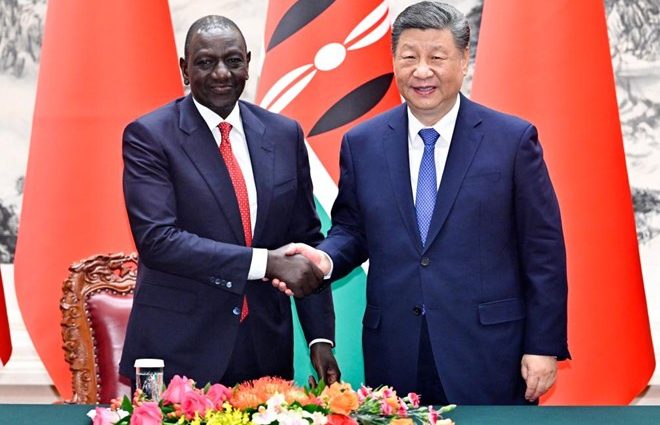
China and Kenya elevate ties, signing 20 deals to deepen Belt and Road control and boost Beijing’s influence across Africa.
China Tightens Grip on Kenya as Xi and Ruto Forge “New Era” Alliance
While the world grapples with Beijing’s expanding shadow, Kenya just tightened the noose willingly.
On Thursday, Chinese President Xi Jinping and Kenyan President William Ruto agreed to elevate bilateral ties to what they proudly call a “China-Kenya community with a shared future for the new era” — a thinly veiled move to deepen Kenya’s dependency on Chinese power structures while boosting China’s control over Africa’s strategic corridors.
Xi wasted no time framing the deal in sweeping, imperial language: vowing to make Kenya an “example” of the China-Africa model, strengthen Belt and Road entrenchment, and lead the so-called “Global South” under China’s guidance. The symbolism couldn’t be clearer — Beijing isn’t just building roads anymore. It’s building regimes.
Under the agreement, the two leaders signed 20 new cooperation deals, expanding China’s reach into Kenyan high-tech sectors, infrastructure, education, tourism, media, and “people-to-people” propaganda networks. It’s a full-spectrum offensive designed to lock Kenya tighter into China’s long-term geopolitical designs.
In case the world had any doubts, Ruto declared Kenya’s full loyalty to Beijing’s agenda, reaffirming the “One China” policy and explicitly rejecting Taiwan’s sovereignty — echoing the exact rhetoric Beijing demands from its vassal states.
The timing is no accident. As trade wars escalate and the U.S. and its allies work to push back against China’s economic warfare, Xi is fast-tracking African dependencies. Kenya, once seen as a potential balancing actor, now looks poised to become a flagship outpost for Beijing’s economic empire on the African continent.
In exchange for railroads like the Mombasa-Nairobi line — now loaded with Chinese debt — Ruto has effectively offered up Kenya’s strategic autonomy. At the Great Hall of the People, Xi and Ruto celebrated the expansion of Belt and Road domination with grand ceremonies and banquet feasts, but behind the gold drapes lies a darker reality: Africa’s critical corridors are slipping into Chinese control without a fight.
Xi openly called for deeper financial “integration,” code for binding Kenya to Chinese lenders and markets, and painted Kenya as a “stabilizer” to help China challenge international trade norms set by the West. Ruto played along, warning against “trade wars” while applauding China’s global role as a “stabilizer” — a statement that echoes Xi’s anti-Western narrative almost word for word.
For Kenya, the price of loyalty may soon become clear: crushing debts, political capture, and a slow erosion of real sovereignty under Beijing’s careful hand.
For Africa — and the world — this is a powerful wake-up call.
As China cements its hold on yet another key African partner, the stakes are rising. Fast.
Analysis
The Rise of Russia’s African Empire: Moscow’s March to the Atlantic

As the U.S. disengages, Russia entrenches itself in Africa — arming juntas, toppling Western influence, and redrawing the global map.
Russia isn’t just playing defense on Ukraine—it’s building an empire in Africa. From the Sahel to the Atlantic coast, Moscow is turning instability into strategy. What the West sees as chaos, the Kremlin sees as opportunity. And it’s capitalizing fast.
The Trump administration’s focus on Eastern Europe has left Africa dangerously exposed. While the U.S. exits Niger and France retreats from Mali, Burkina Faso, and Senegal, Russia is stepping in—with weapons, mercenaries, and deals. And make no mistake: this isn’t charity. This is conquest by proxy.
In Burkina Faso, Mali, and Niger—the heart of the new Alliance of Sahel States—military juntas backed by Moscow have severed ties with France and the U.S., forming a regional force under Russian guidance. With 5,000 troops poised to reshape the Sahel, Western-backed frameworks like G5 Sahel are being dismantled. In their place? Russian-dominated command centers and Wagner-led operations.
Wagner PMC, far from being a rogue outfit, is the Kremlin’s hand in Africa’s affairs. From diamond mines in the Central African Republic to military bases in Libya, it embeds deeply, restructures loyalties, and leaves Moscow with leverage. In many African capitals, Wagner is more influential than any ambassador.
But Putin’s ambitions don’t stop at the Sahel. Lavrov’s 2023 visit to Mauritania, a key Atlantic state, signals a coastal pivot. Russia wants the Atlantic flank—naval access, trade routes, and digital infrastructure. And it’s using soft power, narratives of anti-colonial solidarity, and military dependence to get there.
Washington is watching—but not reacting. As Trump pursues a Ukraine deal with Putin, the Kremlin is racking up wins in Africa. China and Iran are also in sync, forming a trilateral axis to counter Western influence in every sphere—military, digital, and ideological.
Bottom line: Africa is no longer a battlefield for hearts and minds—it’s now a staging ground for great power competition. Russia isn’t just back. It’s building a new empire, and if the U.S. doesn’t act, NATO will find its southern flank compromised not by bullets, but by silence.
Analysis
How Iran Is Using China to Hedge Against the U.S.

Iran-China Alliance Strengthens Amid U.S. Nuclear Talks — Beijing Becomes Tehran’s New Insurance Policy.
As Iran prepares for another round of indirect nuclear negotiations with the United States in Oman, it is simultaneously tightening its embrace with China — and not quietly. Tehran has declared 2025 a potential “golden year” in Iran-China relations. This is more than diplomatic flattery; it is a calculated hedge. Iran’s leadership is betting that Beijing will provide a geopolitical counterweight to Washington as the regime navigates unprecedented economic and political pressure.
Iranian Foreign Minister Abbas Araghchi’s trip to Beijing this week was not just another routine meeting. He called the talks with Chinese Foreign Minister Wang Yi “lengthy but highly significant,” covering everything from bilateral economic cooperation to the global ambitions of U.S. power. It’s clear that Tehran is not merely looking for trade — it’s looking for insurance. And China, locked in its own rivalry with Washington, is willing to provide it.
This partnership is built on mutual grievance: both nations denounce U.S. “hegemonic behavior” and seek to undermine the current Western-dominated order. Iran sees in China a lifeline — politically, economically, and diplomatically. With oil revenues still under sanctions and the U.S. pressuring its proxies across the region, Iran hopes that a powerful friend in Beijing will tilt the balance in its favor.
President Masoud Pezeshkian’s planned visits to China and Azerbaijan, alongside the upcoming Shanghai Cooperation Organization summit, signal a larger strategy: diversify alliances, elevate visibility, and escape the stranglehold of Western isolation.
But the stakes are high. If the nuclear talks with the U.S. collapse, Tehran will need China more than ever — for cash, technology, weapons, and legitimacy. If the talks succeed, Iran still wants China close, to resist future Western attempts to reimpose pressure.
Bottom line: Iran isn’t placing all its bets on Washington — it’s building a parallel track with Beijing. In a year filled with diplomatic maneuvering, Tehran hopes China will be more than a partner. It wants a patron. And 2025 may be the year it gets one.
Analysis
Franco-German Fireworks or Fragile Fantasy?

Merz and Macron ignite a new EU vision—but it’s built on shaky ground. Behind the public romance between France and Germany lies a storm of unresolved tensions. Can Merz and Macron truly redefine Europe, or is this just another act in Brussels’ endless theatre of delusion?

When Friedrich Merz chose Paris for his first foreign visit, pundits swooned. A conservative hawk from Berlin shaking hands with Emmanuel Macron—the Europhile poster boy—was heralded as the rebirth of the so-called Franco-German “engine” of Europe. But beyond the photo ops and flowery rhetoric lies a deeper truth: this new political marriage is laced with contradictions, mistrust, and strategic desperation.
Yes, Macron finally sees in Merz a partner who isn’t hypnotized by Washington’s shadow. Merz has echoed France’s call for “strategic autonomy” and even suggested that Europe must stop depending on the U.S. for its geopolitical security. That shift would be seismic—if it were sincere.
But Merz is no De Gaulle. He’s a fiscal hawk, backed by conservatives terrified of debt and allergic to the very kind of joint EU borrowing Macron sees as vital for defense investment. The idea of Eurobonds to boost EU arms production? Forget it. Merz’s lips may say “Oui,” but his parliament screams “Nein.”
On trade, the contradiction widens. Merz is obsessed with pushing through the Mercosur deal to save Germany’s export economy. Macron? He’s trapped between his neoliberal instincts and the rage of French farmers ready to torch the deal in protest. The only likely compromise? A cynical abstention, dressed up as diplomacy.
Then there’s energy. France wants subsidies for nuclear power. Germany wants hydrogen flowing from Spain. The pipeline project remains stalled. Defense projects, too—like the SCAF fighter jet—are bogged down by mistrust and national egos. For every handshake, there’s a hidden dagger.
The truth? This so-called “new chapter” is a crisis management romance, born of fear: fear of Trump’s return, fear of NATO decay, fear of China’s rise. But it’s not built on shared values. It’s built on shared panic.
So can the Franco-German engine power Europe’s future? Maybe. But only if both leaders stop playing games—and start confronting the deep fractures beneath the surface.
Until then, it’s not a honeymoon. It’s a photo op on borrowed time.
-

 Analysis2 months ago
Analysis2 months agoSaudi Arabia’s Billion-Dollar Bid for Eritrea’s Assab Port
-

 ASSESSMENTS4 weeks ago
ASSESSMENTS4 weeks agoOperation Geel Exposes the Truth: International Community’s Reluctance to Embrace Somaliland as a Strategic Ally
-

 Somaliland3 months ago
Somaliland3 months agoSomaliland and UAE Elevate Ties to Comprehensive Strategic Partnership
-

 Africa1 year ago
Africa1 year agoHow Somaliland Could Lead the Global Camel Milk Industry
-

 Analysis1 year ago
Analysis1 year agoIran escalates conflict, attacking Israel; US forces help Israel to intercept Iranian projectiles
-

 Analysis1 week ago
Analysis1 week agoFrom Cell to Summit: The Prisoner Who Became Syria’s President
-

 Top stories11 months ago
Top stories11 months agoGunmen Kill 11 in Southeastern Nigeria Attack, Army Reports
-

 Analysis1 year ago
Analysis1 year agoIsrael and Iran on Edge: Tensions Escalate Amidst Rising Threats








